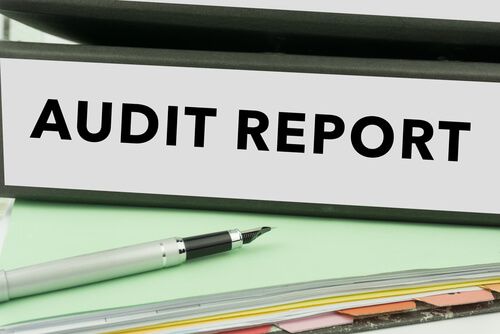Auditing provides a tremendous amount of information about the state of your operations. But it is often hard to identify what data is relevant and where to look for it. Auditing concerns your financial sheets, customer support, and warehouse deliveries, things crucial for the growth and improvement of your business. Audit plays a vital role in running your business smoothly and provides the most significant benefits for owners and regular employees. You can then adopt new strategies to reach the target profit and measure the productivity level of your business.
The process could be difficult, especially when you do not have proper knowledge about it. You must follow the standards and regulations of doing auditing.
You must have thought about how to do auditing or how to do GST audit? Do you know how to do a perfect audit in your business? It is always better to check the records of your company. In this post, you will learn why it is crucial to conduct an audit in your business, and more importantly, what are the things to check for and how to do an internal audit.
What is a Business Audit?
It is the process of examining, measuring, or checking to see if something is wrong, working appropriately, legally, or following standards. Audits are essential for every business because it helps them assess their operations.
A frequent checkup contains the analytical assessment of the current operations and plans for future performance. To do a perfect audit in your business, you need to fix the shortcomings that hinder the growth of your business. After all, the answer to conducting an internal audit is present in certain things that you can neither predict nor foresee.
How to do a tax audit?
Doing a perfect audit in your business can be overwhelming. It’s not just one report that you need to go through but many. Don’t worry. At Bahi Khata OkCredit, you can access some great ideas to make your audit as easy as possible.
Did you know that there are five functional areas in conducting an audit? Although many people know that running an audit is vital to a successful business, they don’t realise which parts of the business they should focus their time and energy on. We’ll walk you through these areas, while also letting you in on some auditing tips to help you ensure a thorough audit occurs.

Since every business is different, below are the steps that apply to all businesses:
Step 1: Identify the Problem Areas
One of the essential steps to conducting a good business audit is to identify your primary business areas. It allows you to define where you will focus your time and pinpoint the main areas of friction in your business. This is also known as an actionable audit report.
When you start, you will be making decisions based on data that may not be available in the future. While you can always ask for more money when things don’t add up, it’s tempting not to pass the required budget. Having a good audit can help get your priorities straight and advise on alternative revenue streams.
Step 2: Create an Audit Calendar
Creating an audit calendar is an excellent way of doing a business audit. It doesn’t matter if you have 100 tasks, it will all be on the calendar, and it becomes very easy to keep track of things. Creating an audit calendar will make it easy to see the difference between spending your time on the essential things and the things you are doing to make your business successful.
By creating an audit calendar, turning your daily tasks into specific and well-documented goals covered weekly, you will look at your day based on its importance rather than going through it for the sake of it.
While planning an audit calendar, you create a schedule for giving yourself ample time each month to complete everything to ensure that no work is missed or items not completed are automatically flagged. You will then have an overall count of what you managed to accomplish for the whole month.

Step 3: Alert the Specific Departments
To do a perfect audit in your business, you need to look at four key elements:
- What departments should you audit?
- When should you do it?
- What should be included in the report?
- Who will be involved?
Your brand should be fully engaged. It should also involve the legal, marketing, finance, accounting, and sales departments.
One of the things that can make the whole accounting process more manageable is to handle the department’s activities. You can monitor your teams’ work and supervise in case of any difficulties. To get an initial idea about the audit, send an email including the project description to your team leaders, covering the country, size, budget, and agenda pointers.
Step 4: Be Prepared
An audit can be a complicated process in almost any company, no matter the size. So, the process will be different. When you’re ready for an audit, you must have all your books and records prepared for inspection. Being prepared also makes it easier to remain organised as business owners. Businesses must stay prepared and in control to have a plan in place and enough staff members present at all times.

Step 5: Report the Audit findings
An audit report is essential to show the findings of every aspect of your business. It includes what functions and activities were underway at the time of the last auditing and how they performed, and whether or not you had to make any changes. When you have a perfect audit in your company, it allows you to proactively look for new ways of growing and improving your business.
The best audit report should put the focus on solutions and not just processes. An audit report does this by identifying areas for improvement and providing a specific set of actionable takeaways. Audit reports are great if you’re trying to get your business in shape for the future or if you want to know the factors that could affect your financial performance.
OkCredit Bahi Khata is a robust tool used to analyse and fix all the shortcomings to maintain an uninterrupted flow of customer satisfaction in a business. It's an all-in-one credit monitoring solution that enables you to keep track of your business transactions and practices. It works as a logging mechanism for your business, which helps maintain records, bookkeeping, and tracking.
Conclusion
You can do a perfect audit in your business with the help of local or national bookkeeping services. They can keep track of the financial status of your business and suggest some adjustments that will help you reach your goals.
With the help of professionals at Bahi Khata OkCredit, you can make a perfect audit in your business. You can harness more opportunities and profit from an efficiently working organisation.
Also read:
1) How to Use Google Adwords for Digital Marketing?
2) Tips & Tricks to optimise the Google Maps Listing for Your Business
3) Is Market Research Useful for a Small Business?
4) Top-10 Things & Technologies that will be trending in the year 2021
5) OkCredit: All you need to know about OkCredit & how it works.
Stay updated with new business ideas & business tips with OkCredit blogs in English, Hindi, Malayalam, Marathi & more!
Download OkCredit now & get rid of your bookkeeping hassles.
OkCredit is 100% Made in India.
FAQs
Q. What are the best tips for successful internal audits?
Ans. The best tips for successful internal audits are as follows:
- Have a clear goal
- Create support and establish authority
- Identify stakeholders
- Prioritise
- Formulate suggestions for improvements
- Split internal audit into different themes
- Use the right tools
Q. What are the principles of reliable audits?
Ans. The seven principles for reliable audits are listed as follows:
- Integrity
- Fair presentation
- Due professional care
- Confidentiality
- Independence
- Evidence-based approach
- Risk-based approach
Q. What do you mean by an audit checklist?
Ans. An Audit checklist is a significant tool that helps to compare the requirements set by ISO standards and the business practices. It contains all the components required to perform an audit efficiently and effectively. It helps to avoid mistakes and check the accuracy of the audit.



![Series Funding [Types, How it works and More!]](https://okcredit-blog-images-prod.storage.googleapis.com/2021/02/seriesfunding1.jpg)
